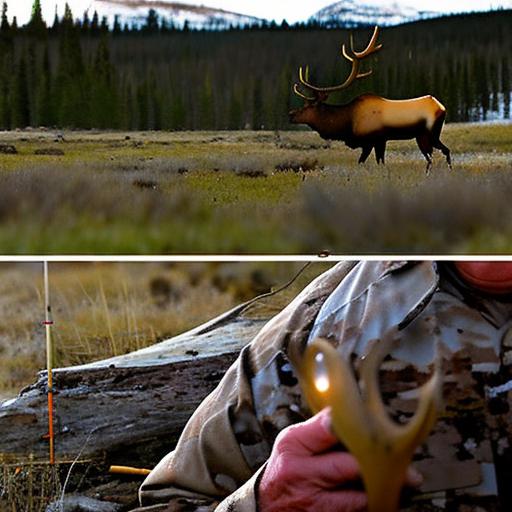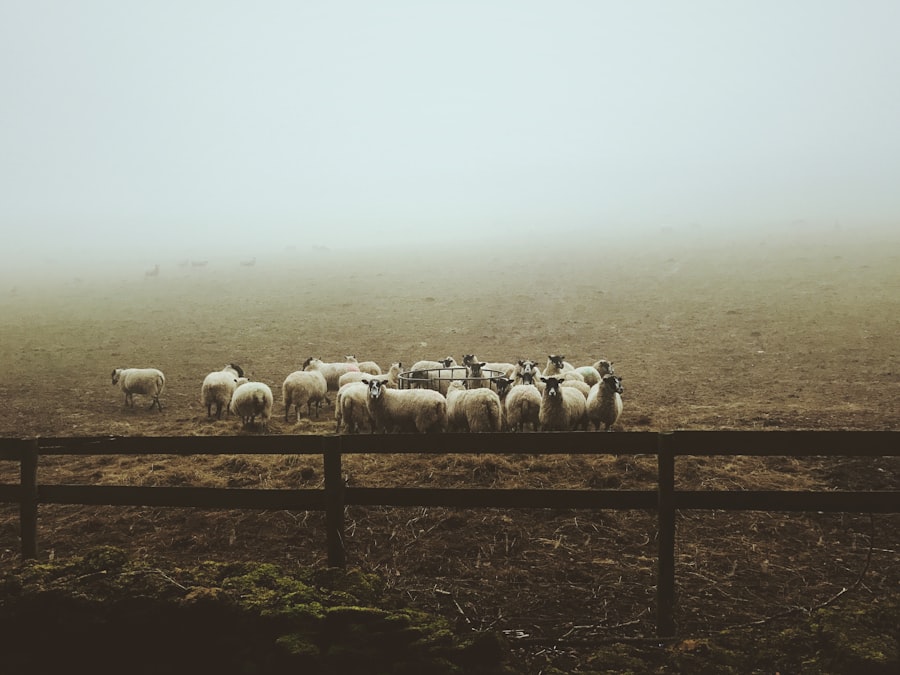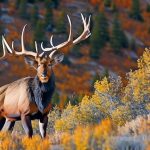Your cart is currently empty!

Chasing the Ultimate Trophy: My Experience on a High Fence Elk Hunt

High fence elk hunting is a unique and exciting experience that allows hunters to pursue one of North America’s most majestic and sought-after game animals within the confines of a controlled environment. Unlike traditional elk hunting, where hunters must navigate vast and unpredictable wilderness areas, high fence elk hunting takes place within a designated enclosure that is specifically designed to provide a challenging and rewarding hunting experience.
The high fence serves as a boundary that keeps the elk within a defined area, allowing hunters to focus their efforts on tracking, spotting, and ultimately harvesting their trophy. This controlled environment not only increases the chances of success for hunters but also provides an opportunity to observe and study the behavior of these magnificent animals up close.
Key Takeaways
- High fence elk hunting requires preparation and training for success.
- Tracking and spotting elk is a crucial part of the hunt.
- Ethical considerations and responsibility are important when taking the shot.
- Proper field dressing and processing is necessary for a successful harvest.
- High fence hunting can contribute to conservation and sustainability efforts.
Preparing for the Hunt: Gear and Training
To ensure a successful high fence elk hunt, it is essential to have the right gear and undergo proper training. The necessary gear includes a high-powered rifle or bow, appropriate ammunition or arrows, camouflage clothing, sturdy boots, binoculars or spotting scopes, and a backpack for carrying essential items such as water, snacks, and field dressing equipment.
Physical and mental training are also crucial aspects of preparing for a high fence elk hunt. Elk are known for their agility and endurance, so hunters must be physically fit to navigate the rugged terrain within the enclosure. Regular exercise, such as hiking or running, can help improve cardiovascular endurance and strengthen muscles needed for hiking and carrying gear.
Mental preparation is equally important. Hunters must be able to remain calm and focused in high-pressure situations. Practicing shooting skills at a range can help build confidence and accuracy. Additionally, studying elk behavior and learning about their habits can give hunters an advantage when it comes to tracking and spotting them in the enclosure.
The Hunt Begins: Tracking and Spotting Elk
Tracking and spotting elk within a high fence enclosure can be challenging due to the size of the area and the natural camouflage of the animals. However, there are several tips that can increase the chances of success. First and foremost, it is essential to be patient and persistent. Elk are known to be elusive and can quickly disappear into dense vegetation or rugged terrain.
One effective strategy is to look for signs of elk activity, such as tracks, droppings, or rubs on trees. These indicators can help narrow down potential areas where elk may be present. Once a general area is identified, hunters should move slowly and quietly, scanning the surroundings for any movement or signs of elk.
Binoculars or spotting scopes are invaluable tools for spotting elk from a distance. These optics allow hunters to observe the animals without alerting them to their presence. It is crucial to remain hidden and avoid sudden movements that could startle the elk.
The Thrill of the Chase: Closing in on the Trophy
| Metrics | Values |
|---|---|
| Number of participants | Unknown |
| Number of clues | 9 |
| Estimated value of the treasure | 2 million |
| Number of states the treasure is hidden in | 4 |
| Number of deaths related to the treasure hunt | 5 |
| Number of searchers rescued by authorities | Unknown |
As hunters get closer to their desired trophy elk, the adrenaline rush intensifies. The thrill of the chase is one of the most exciting aspects of high fence elk hunting. Closing in on an elk requires stealth and careful navigation through challenging terrain.
Safety should always be a top priority during the chase. Hunters should be aware of their surroundings and avoid taking unnecessary risks. It is essential to follow all hunting regulations and guidelines to ensure a safe and ethical hunt.
Taking the Shot: Ethics and Responsibility
When it comes time to take the shot, ethical considerations come into play. Ethical hunting practices dictate that hunters should strive for a clean and humane kill. This means taking shots within a reasonable distance and aiming for vital organs to ensure a quick and humane death.
Hunters must also consider their shooting abilities and limitations. It is crucial to practice shooting skills regularly to maintain accuracy and confidence in making ethical shots. If a shot opportunity presents itself but does not meet ethical standards, it is essential to exercise restraint and wait for a better opportunity.
The Harvest: Field Dressing and Processing

After a successful shot, the next step is to field dress and process the elk. Field dressing involves removing the internal organs to cool the meat quickly and prevent spoilage. It is essential to have the necessary tools and knowledge to perform this task properly.
Once the elk is field dressed, it can be transported to a processing facility or butcher for further processing. The meat can be cut into various cuts, such as steaks, roasts, and ground meat, depending on personal preferences. It is important to utilize all parts of the animal to minimize waste and show respect for the animal’s life.
Celebrating the Success: Sharing the Experience with Others
High fence elk hunting is not just about the harvest; it is also about sharing the experience with friends and family. The excitement and sense of accomplishment that come from a successful hunt are best enjoyed when shared with loved ones.
One way to celebrate the success is by hosting a gathering or cookout where friends and family can enjoy the fruits of the hunt. Elk meat is known for its lean and flavorful qualities, making it a popular choice for grilling or roasting. There are numerous recipes available that showcase the versatility of elk meat, from hearty stews to gourmet steaks.
Reflections on the Hunt: Lessons Learned and Memories Made
Every high fence elk hunt is a unique experience that leaves lasting memories. Reflecting on the hunt allows hunters to appreciate the lessons learned and the personal growth that comes from challenging oneself in pursuit of a trophy animal.
Lessons learned may include honing tracking and spotting skills, improving shooting accuracy, or gaining a deeper understanding of elk behavior. These lessons can be applied to future hunts and contribute to becoming a more skilled and ethical hunter.
The Value of High Fence Hunting: Conservation and Sustainability
High fence hunting can contribute to conservation efforts and promote sustainability. By managing the elk population within a controlled environment, landowners can ensure that the herd remains healthy and balanced. This management can include selective harvesting of older or surplus animals to prevent overpopulation and maintain a healthy ecosystem.
Additionally, high fence hunting can generate revenue that can be reinvested in conservation efforts. Landowners often use hunting fees to fund habitat restoration projects, wildlife research, and other initiatives aimed at preserving and enhancing the natural environment.
Why High Fence Elk Hunting is Worth the Experience
High fence elk hunting offers a unique and exciting experience for hunters of all skill levels. The controlled environment allows for a more focused and rewarding hunting experience, while also providing an opportunity to observe and study these magnificent animals up close.
Preparing for a high fence elk hunt involves acquiring the necessary gear and undergoing physical and mental training. Tracking and spotting elk within the enclosure requires patience and persistence, while closing in on the trophy provides an adrenaline rush like no other.
Taking an ethical shot and properly field dressing and processing the elk are essential aspects of responsible hunting. Sharing the experience with friends and family, reflecting on lessons learned, and appreciating the value of high fence hunting contribute to a well-rounded experience.
High fence hunting also has conservation and sustainability benefits, as it allows for the management of elk populations within a controlled environment. By participating in high fence elk hunting, hunters can contribute to conservation efforts while enjoying a thrilling and memorable experience.
If you’re interested in high fence elk hunting, you might also enjoy reading our article on the best caliber for long-range varmint hunting. This informative piece discusses the different calibers that are ideal for taking down varmints at long distances. Whether you’re a seasoned hunter or just starting out, choosing the right caliber is crucial for a successful hunt. Check out the article here to learn more!
FAQs
What is a high fence elk hunt?
A high fence elk hunt is a type of hunting where elk are kept within a fenced area, typically on private land. The fence is designed to keep the elk within a specific area, making it easier for hunters to locate and hunt them.
Is a high fence elk hunt ethical?
The ethics of high fence elk hunting are a matter of debate. Some argue that it is unethical to hunt animals that are confined to a small area, while others argue that it is no different than hunting on public land. It is important for hunters to follow all laws and regulations regarding high fence hunting.
What are the benefits of a high fence elk hunt?
One benefit of a high fence elk hunt is that it can be easier to locate and hunt elk within a confined area. Additionally, high fence hunting can provide a more controlled environment, which can be safer for both hunters and the animals.
What are the drawbacks of a high fence elk hunt?
One drawback of a high fence elk hunt is that it can be seen as less challenging than hunting on public land. Additionally, some people argue that it is unethical to hunt animals that are confined to a small area.
What should I consider before going on a high fence elk hunt?
Before going on a high fence elk hunt, it is important to research the laws and regulations in your area. Additionally, hunters should consider the ethics of high fence hunting and whether it aligns with their personal beliefs. It is also important to choose a reputable outfitter and to ensure that all necessary permits and licenses are obtained.

Herb has been a longtime lover of the outdoors. Whether it be hunting, camping, fishing or just getting outside to reset. Proud father and animal lover. Bourbon anyone?

by
Tags:
Comments

Categories
- Big Game Hunting (301)
- Deer (202)
- Reviews (3)
- Shooting (16)
- Slingshot (1)
- Small Game Hunting (42)
- Upland Hunting (126)
- Waterfowl Hunting (3)





Leave a Reply